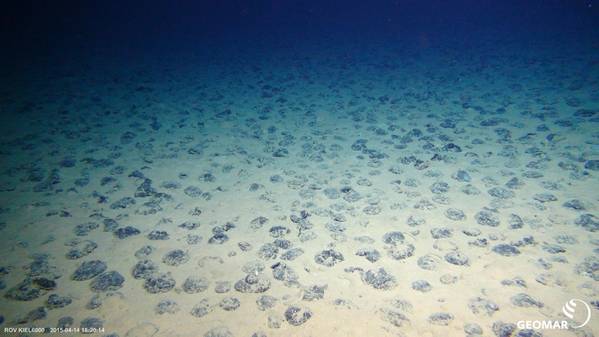
Extracting minerals from the ocean floor could negatively impact biodiversity on a scale of up to 25 times greater than land-based mining, and fixing the damage would cost twice as much as extraction, a new report said on Thursday.
A search for alternatives to fossil fuels has driven demand for materials that go into batteries, some of which can be found on the seabed where ecosystems have yet to be fully explored.
Deep-sea mining would extract cobalt, copper, nickel, and manganese from potato-sized nodules which pepper the sea floor at depths of 4-6 kilometers. The nodules are an essential habitat for many species.
The total biosphere impacted by this mining in international waters alone would be up to 75 million cubic kilometers, a greater volume than all the freshwater in the world, according to the report by non-profit Planet Tracker.
"Sadly, the nodules... take millions of years to form," said François Mosnier, head of Oceans Programme at Planet Tracker, which warned resulting biodiversity loss could be permanent.
Advocates say deep sea ecosystem restoration, such as installing artificial clay nodules to replace those lost, could mitigate these impacts.
But this would cost between $5.3 - $5.7 million per square kilometer, compared with $2.7 million price per square kilometer to mine them, according to the report.
Seabed mining in international waters cannot start until the International Seabed Authority (ISA), a Jamaica-based U.N. body, decides on regulations expected by July.
Several countries, including Germany, and companies, such as Google, AB Volvo Group, and Samsung SDI are calling for a moratorium on the start of the practice.
Others are supporting it. Norway in June proposed opening parts of its extended continental shelf in the North Atlantic for mineral exploration.
"Any deep sea activity is hugely expensive. In Norway, we're also talking the High Arctic. You have ice sheets floating around... really difficult weather conditions... there is a huge issue about the technological development and the funding needed for that," said Kaja Loenne Fjaertoft a senior advisor at Sustainable Oceans with the World Wide Fund for Nature (WWF).
(Reuters - Reporting by Clara Denina; Additional reporting by David Stanway; Editing by Emma Rumney and Aurora Ellis)
Image source: https://www.geomar.de/news/article/tiefseebergbau-transparentes-umweltmanagement-muss-gewaehrleistet-werden



